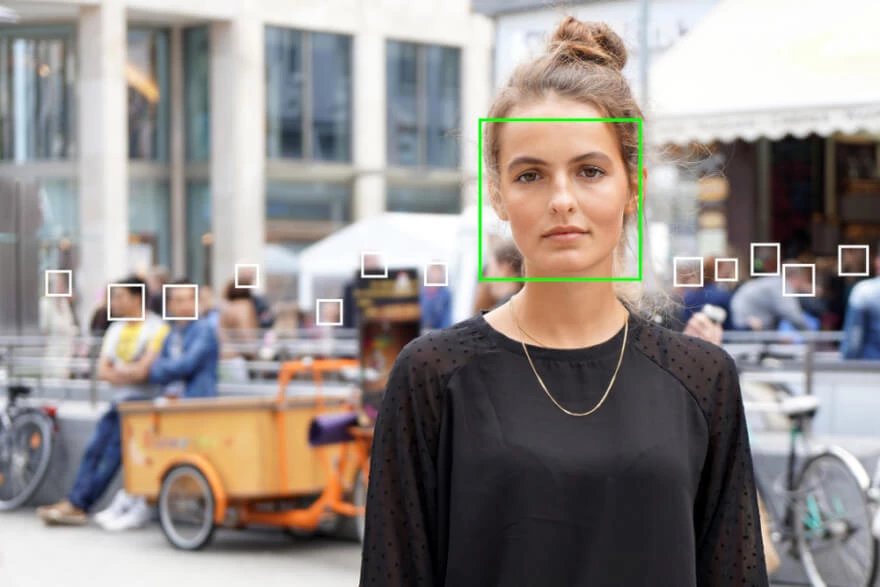Autofocus modes - Guide for Beginners

- 1. Focusing camera combinations
- 2. Keep in mind a concept of AF sensors
- 3. Remember sensor histogram
- 4. Learn key factors affecting AF
- 5. Calculate a number and type of AF points
- 6. Two types of autofocus sensors:
- 7. Try AF tracking (AI SERVO) or one-shot (ONE-SHOT)
- 8. Get an AF-assist beam
- 9. Capture Motion and get a dynamic shot
- 10. Shoot portraits and other static shots
- 11. What about AF video mode?
- 12. Why one should use a manual option when there is an AF?
Nowadays everything can be captured and filmed automatically. The selection of high-quality shooting equipment is impressive. Each manufacturer does it best to gain clients and positive feedback, providing, lessons and reviews of the latest DSLR and lens models, tripods, etc. What makes new camera models so smart and simple in shooting professional pictures? A camera's autofocus system adjusts the lens to focus on the subject and can provide the difference between a sharp shot and a missed opportunity. Despite a seemingly obvious task of "clarity in a focus point", the hidden task is, unfortunately, not so easy.
1. Focusing camera combinations
Technically, focusing is done differently in different cameras. Let us look at three possibilities to face while shooting.

- Lack of autofocus modes at all. A wide-angle prime lens is used. Let's say you're shooting a portrait against a landscape. Beyond one meter, everything turns out to be more or less sharp. This solution is used in cheap film cameras and digital cameras at a very low level.
- Active autofocus mode. It is used in compact cameras. The camera emits a pulse of infrared light. By analyzing the reflected beam, by measuring the distance to the object, the camera adjusts the focus. The disadvantage of this system: the distance of range measurement is limited. It is difficult to shoot through the glass because the beam is reflected off the glass.
- Passive autofocus. Such an option is usually used in DSLRs. The camera focuses on areas of contrast. This system is very dependent on lighting, the more contrasting the focusing object, the more confident the camera will focus. In this case, there is no distance limitation, but such an option “does not like” low-contrast objects.
- The autofocus processor (AFP) changes the focusing distance slightly.
- AFP reads the AF sensor and estimates how much focus has changed.
- Using information from the previous step, AFP adjusts the lens to refocus.
- AFP repeats previous steps in sequence until a satisfactory focus is achieved.

Many cameras use combination hybrid systems, combining the advantages of active and passive focusing. Autofocus (AF) works either by using the contrast sensors in a camera (passive AF) or by sending a signal to illuminate or estimate the distance to the subject (active AF). Passive AF can be performed with contrast or phase-detection methods, but both rely on contrast to achieve accurate AF; therefore, they are considered qualitatively identical.

2. Keep in mind a concept of AF sensors
Our camera's autofocus sensor (s) are located in different parts of the image field of view and are the whole system behind achieving sharp focus. Each sensor measures changes in contrast in a corresponding area of the image and maximum contrast are considered to correspond to maximum sharpness.

3. Remember sensor histogram
Many compact digital cameras use an actual image sensor as a contrast sensor (using a technique called contrast AF) and are optionally equipped with multiple discrete AF sensors (which are more common with phase-detection AF).
The focusing process works broadly as follows:
The whole process usually takes a split second. In difficult cases, a camera may not achieve a satisfactory result and will start repeating the above process, which means failure. This is a terrible case of "focus hunting", when the camera constantly moves the focus back and forth, without achieving a final result. However, this does not mean that focusing on the selected subject is impossible.

4. Learn key factors affecting AF
Your subject can have a huge impact on how successful AF is. Often it means even more than differences between camera models, lenses, or focus settings. The three most important factors affecting AF are light, the contrast of a subject, and the movement of a camera or subject. Note that all of these factors are interrelated; in other words, AF is achievable even on a dimly lit subject if it has high contrast and vice versa. This has important implications for your choice of AF point: choosing a focus point that is on a clear border or pronounced texture will help you achieve better AF, all other things being equal.
Focusing on an external illumination of a scene might be the best approach, minus the fact that this illumination rapidly changes location and intensity depends on a position of moving light sources. If the camera fails to focus on ambient light, a less contrasting (but more static and reasonably well lit) focal point can be selected. However, the above choice is difficult by the fact that it often needs to be made within a fraction of a second. Additional specific AF technology for standing and dynamic frame will be discussed in the respective sections towards the end of this article.

5. Calculate a number and type of AF points
Stability and flexibility of AF are primarily a result of a number, position, and type of AF points that are available with a given camera model. High-end DSLR has 45 or more AF points, while other cameras may even have just one central point.

6. Two types of autofocus sensors:
1. Cross-shaped sensors (two-dimensional contrast detector, high accuracy);
2. l vertical sensors (one-dimensional contrast detector, less accuracy).
For DSLR cameras, the number and accuracy of AF points may also vary depending on a maximum aperture of a lens used. This is an important factor when choosing a lens: even if you do not plan on using maximum aperture, it can still help the camera achieve higher AF quality. Further, since the center AF sensor is almost always the most accurate, for off-center subjects it is often best to use the center AF sensor first for focusing (before changing the composition).
Multiple AF sensors can be operated simultaneously for increased reliability, or separately for increased distinctiveness, depending on selected camera settings. Some cameras also have AutoGRIP, a function for group photography that ensures that all points are in an acceptable degree of focus.

7. Try AF tracking (AI SERVO) or one-shot (ONE-SHOT)
The most widely supported camera focus modes are the following: one-shot, which is best for not moving images. This mode is prone to focusing errors for fast-moving subjects because it is not designed for movement, and it can make it difficult to track moving subjects with the viewfinder. Focusing once requires focusing before a picture can be taken.
Many cameras also support an AF mode that continuously adjusts the focusing distance for moving subjects. Among well-known Canon focus modes, the most popular is called the "AI Servo" mode. Nikon focus modes call this "continuous" focusing. Tracking mode works based on an assumption about the location of an object at the next moment based on a calculation of speed from a previous focusing data. The camera then focuses ahead of the predicted distance for the shutter speed (a delay between a shutter release and a start of exposure). This greatly increases the likelihood of correct focusing on moving subjects.
Actual tracking speed limits depend on how uneven the movement is, the contrast and illumination, the type of lens, and the number of AF sensors used for tracking. Also, keep in mind that using tracking can dramatically reduce your camera's battery life, so use it only when necessary.

8. Get an AF-assist beam
Many cameras are equipped with an AF-assist beam, visible or infrared, which is used in the active AF method. This can be very useful in situations where the subject is insufficiently lit or has insufficient contrast. Although using the assist beam also has its drawbacks as AF is much slower in this case. Most compact cameras use a built-in infrared light source for AF settings, while digital SLRs often use a built-in or external flash to illuminate a subject. When using an auxiliary flash, it can be difficult to achieve AF if the subject moves noticeably between flashes. Therefore, the use of Assisted Illumination is only recommended for a composition that does not move.

9. Capture Motion and get a dynamic shot
AF will almost always work best when capturing motion in AI servo or continuous mode. AF can be significantly improved when a lens does not need to search over a wide range of distances. Perhaps the most versatile way to achieve this is to prepare the camera on an area where you expect a moving subject to appear. On some lenses for SLR cameras there is a switch for a minimum focusing distance, setting it to the maximum possible distance (closer to which the subject will not be) will also increase efficiency.

10. Shoot portraits and other static shots
Such images are best taken in single AF mode, which ensures the accurate focus is obtained before exposure begins. The usual requirements in terms of contrast and illumination are applied here, but there is also little subject movement required.
For portraits, the eye is the best focal point because it is a standard, and because it provides good contrast. Although the center AF sensor is usually the most sensitive, the most accurate AF for off-center subjects is achieved by using off-center points. If you use the center point to lock the focus (and then change the composition). AF distance will always be slightly shorter than the actual one, and this error increases as the subject approach. It is especially important for portraits because they tend to have a shallow depth of field. Since the most commonly used AF sensors are vertical, it may be appropriate to worry about whether the contrast is dominant, vertical, or horizontal. In low light conditions, sometimes AF can only be achieved by rotating the camera by 90 °.

11. What about AF video mode?
Sounds new and impossible but new mirrorless and DSLR cameras that can shoot video may almost certainly have to center AF modes. The ideal approach to understand how it works is to try different things with your camera's various modes and perceive how they work for various sorts of photos. If you still feel great with manual AF, great for you. When you are out taking pictures and finding that your camera is acting by itself with regards to centering, switch the essential and additionally AF modes so you can mention what you need to concentrate on. You will find out that the interface is intended to permit you to change modes immediately, rather than jumping from one mode to another one.

12. Why one should use a manual option when there is an AF?
After all, it is faster, more precise, it allows you to significantly save time, it turns out that it is simpler. Often, in low light conditions, the camera is unable to AF on the desired view, and difficulties may arise in macro photography. Another example is a moving object, such as a restless animal in a zoo. "Chasing" a squirrel is a thankless task, most likely you will not catch it, besides, rods of a cage will interfere with you. You can press the shutter button halfway or lock the exposure (AF-L button) and then recompose and wait. This is called “focus lock”. You need to switch to center focus mode by turning off multi-zone. The distance to the object should remain constant, so try not to move.
But this is not always convenient. You often have to wait a long time, and in difficult conditions, it is more complicated for a camera. There are also other situations where AF simply does not work and there is only one choice to use the menu manually. For example, if you installed an old non-AF lens or a lens from another company through an adapter.
Another tricky case for automatic shooting photo devices: subjects with low contrast, such as blue skies, monochromatic walls on background; shiny, polished surfaces, repeating patterns. In this case, manual focusing will also help you to get bright and professional results.
Co-founder of RetouchMe. In addition to business, he is passionate about travel photography and videography. His photos can be viewed on Instagram (over 1 million followers), and his films can be found on his YouTube channel.
Moreover, his profile is featured on the most popular and authoritative resource in the film industry — IMDb. He has received 51 international awards and 18 nominations at film festivals worldwide.

with RetouchMe














